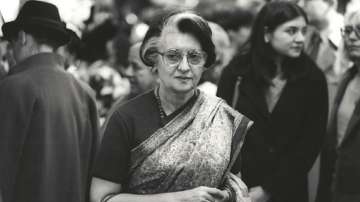Indira Gandhi birth anniversary: Why she was regarded as 'Iron lady' of India?
Indira Gandhi enlisted at Oxford University in England to pursue higher education but had to abandon it mid-way due to poor health and the looming World War II.

Today marks the 105th birth anniversary of the first and only female prime minister of India, Indira Gandhi. Gandhi, nicknamed as the Iron lady of India, was born on November 19, 1917, to Jawaharlal Nehru, the first Prime Minister of independent India, and Kamala Nehru, a freedom fighter in Allahabad.
Gandhi did her early schooling at the Modern School in Delhi, St. Cecilia's, and St. Mary's Convent in Allahabad. She later enrolled at the International School of Geneva for an undergraduate programme. she further attended the Ecole Nouvelle at Beaux, and the People's Own School at Pune and Bombay.
Gandhi enlisted at Oxford University in England to pursue higher education but had to abandon it mid-way due to poor health and the looming World War II. After her return to India, she married Feroze Gandhi in 1942. They had two sons, Rajiv Gandhi and Sanjay Gandhi.
Political career
Gandhi's first eleven years serving as prime minister saw her evolve from the perception of Congress party leaders as their puppet, to a strong leader with the iron resolve to split the party over her policy positions or to go to war with Pakistan to assist Bangladesh in the 1971 liberation war. At the end of 1977, she was such a dominating figure in Indian politics that Congress party president D. K. Barooah coined the phrase "India is Indira and Indira is India".
Gandhi remained in power till 1977 after which her popularity started decreasing among the masses. The main reason for this dislike was alleged electoral malpractice. Several major and minor instances of the use of government resources for campaigning came to light.
Operation Blue star - another controversial decision
Gandhi ordered the Indian army to enter the Golden Temple to remove Bhindranwale (former religious leader turned leading figure of the Khalistan movement) and his supporters from the complex. The army used heavy artillery, including tanks, in the action code-named Operation Blue Star.
The operation badly damaged or destroyed parts of the Temple complex, including the Akal Takht shrine and the Sikh library. It also led to the deaths of many Sikh fighters and innocent pilgrims. The number of casualties remains disputed with estimates ranging from many hundreds to many thousands.
Gandhi was accused of using the attack for political ends. Harjinder Singh Dilgeer stated that she attacked the temple complex to present herself as a great hero in order to win the general elections planned towards the end of 1984. There was fierce criticism of the action by Sikhs in India and overseas. There were also incidents of mutiny by Sikh soldiers in the aftermath of the attack.
Assassinated in cold blood
The hatred for Gandhi among the Sikhs grew to such an extent that she was assassinated by her Sikh bodyguard on October 31st, 1984. The bodyguards shot her down with their service revolvers in at the prime minister's residence at 1 Safdarjung Road, New Delhi. Rajiv Gandhi became the next prime minister as well as party chief of congress after her death.
ALSO READ | Indira Gandhi birth anniversary: PM Modi, Mallikarjun Kharge, others pay tributes to Iron lady
ALSO READ | Bharat Jodo Yatra: Only women to walk with Rahul to mark Indira Gandhi birth anniversary